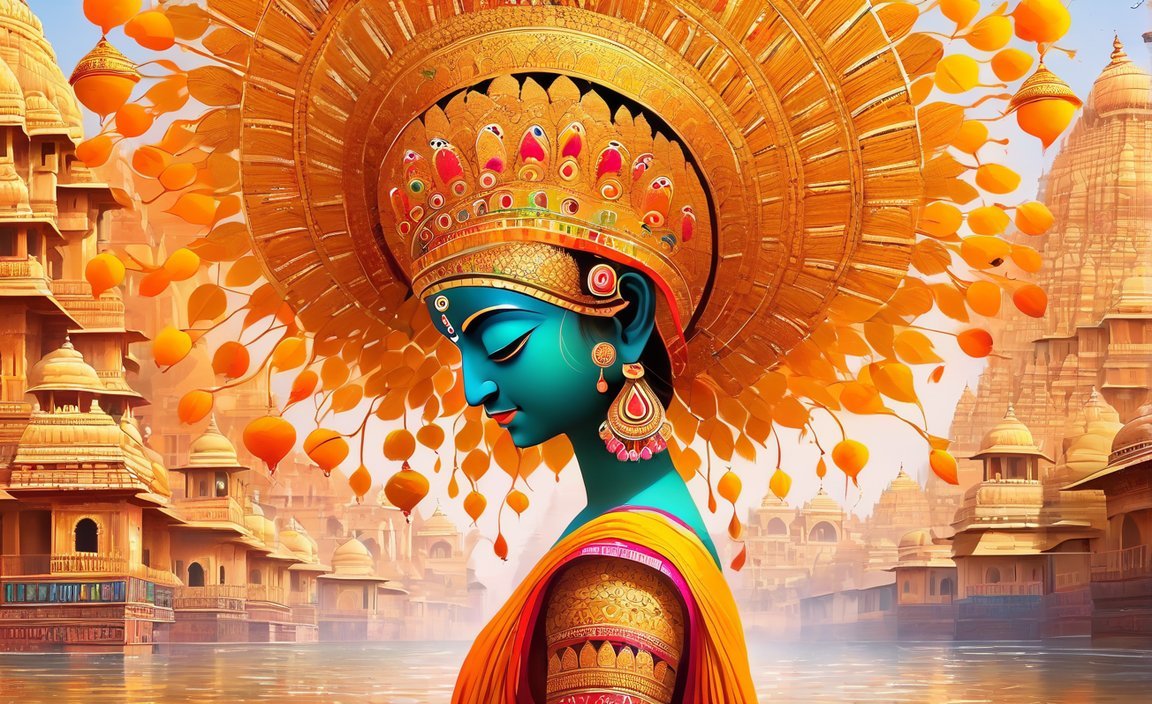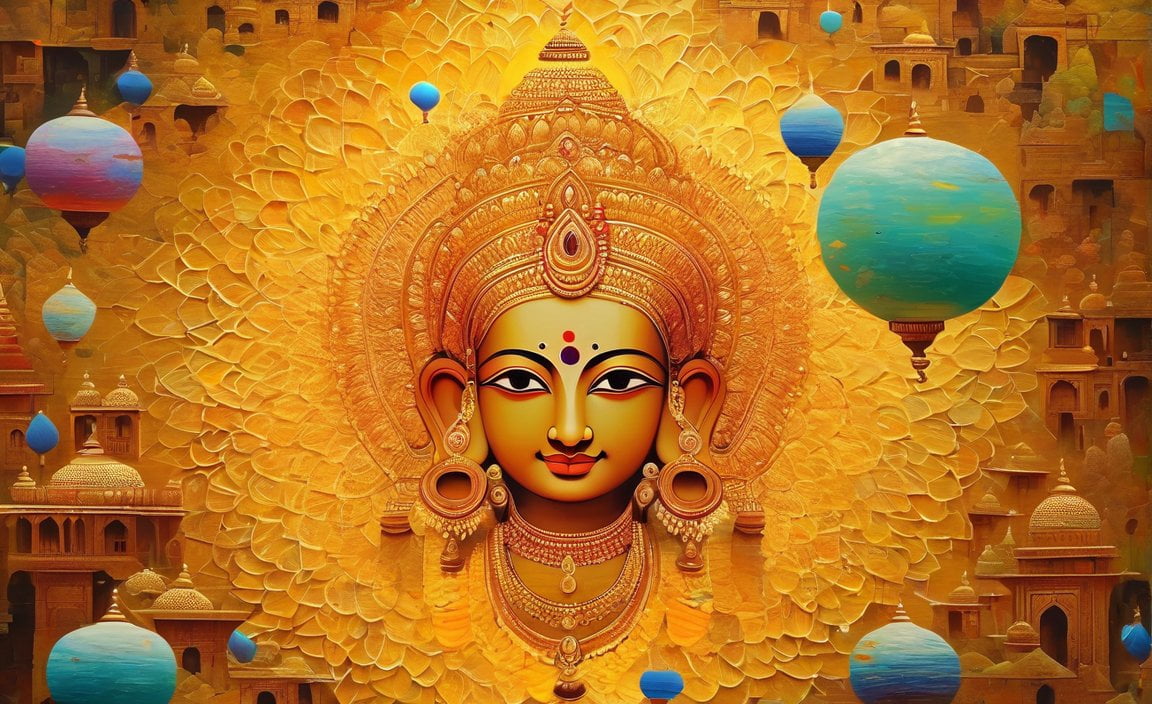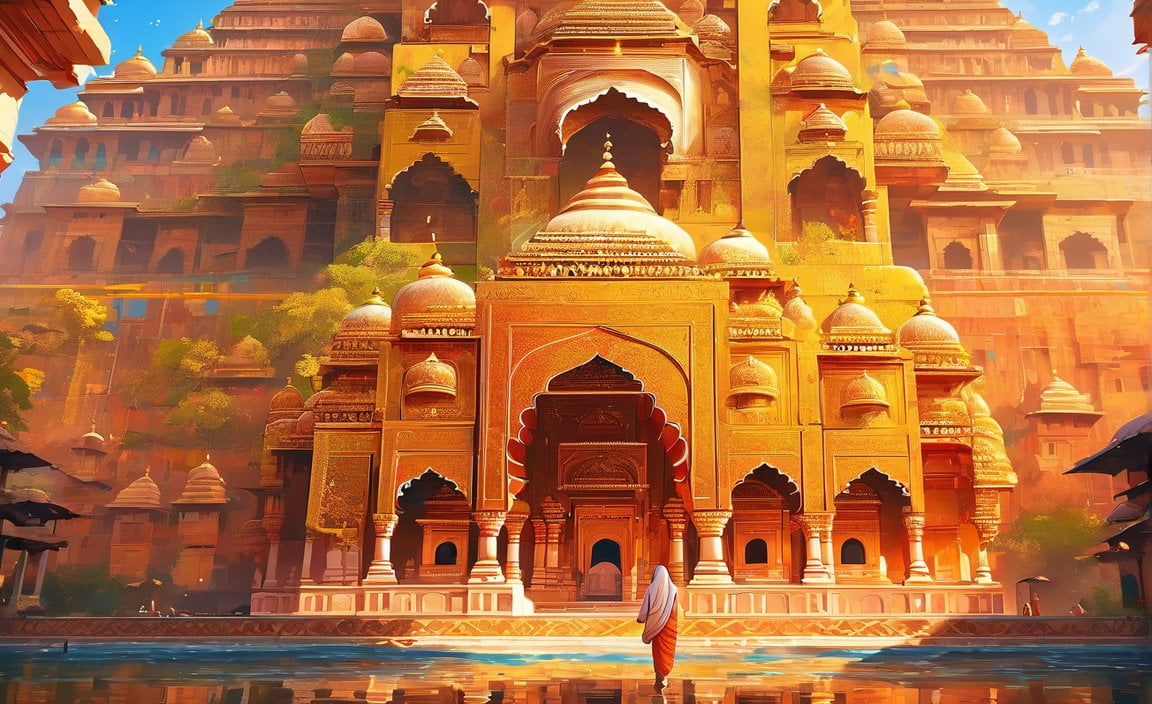Welcome to “Intriguing Insights: Unveiling Fascinating Facts of India”! Get ready to embark on a journey through the enigmatic land of India, where ancient history meets vibrant traditions and breathtaking landmarks. Discover the lesser-known facts that lie within the intricate tapestry of this extraordinary nation. As a seasoned travel journalist with a deep passion for India, I am thrilled to share captivating narratives and unveil the secrets that make this country truly unique. So sit back, relax, and prepare to be enthralled by the intriguing facts that await you.

Key Takeaways:
- India is the seventh largest country in the world, covering 1.27 million square miles.
- The country has a diverse climate that supports around 65,000 animal species, including lions and tigers.
- India is known for its abundant and varied wildlife, including elephants, pythons, river dolphins, and rhinos, as well as its vast array of flowering plants.
- India is home to several notable landmarks, such as the highest rail bridge, the highest motorable road, and a mysterious skeleton lake.
- The country is also renowned for its cultural and religious sites, with over 300,000 mosques and over 2 million Hindu temples.
- Despite being the largest democracy, India has a high poverty rate, with approximately 35% of its population living below the poverty line.
- India is home to over a million millionaires.
- India has unique cultural practices, including widows traditionally wearing white instead of colorful fabrics.
- Notable architectural attractions in India include the Temple of Rats and the Lotus Temple with its 27 petals.
- India offers a rich and diverse culture, stunning natural landscapes, and fascinating landmarks.
Fascinating Facts of India
India, a country known for its rich history, diverse culture, and awe-inspiring landmarks, is brimming with intriguing insights that will leave you amazed. From its vast size and diverse wildlife to its unique cultural practices, India is truly a land of fascinating facts.
A Mosaic of Landscapes and Wildlife
India is the seventh largest country in the world, spanning a massive 1.27 million square miles. To put it into perspective, it’s three times smaller than the United States. With such vast size, it’s no wonder that India is home to a wide range of landscapes, from deserts to mountains, and lush forests to pristine beaches.
This diverse geography supports an incredible array of wildlife. India is a haven for animal lovers, with over 65,000 recorded species calling it home. Among them, you’ll find majestic creatures like lions, tigers, elephants, pythons, river dolphins, and even rhinos. The country’s wildlife doesn’t stop there: India is also blessed with an astonishing 12,000 types of flowering plants.
Landmarks that Defy Expectations
When it comes to landmarks, India does not disappoint. Prepare to be amazed by the country’s engineering prowess and architectural marvels. In India, you can find the highest rail bridge, towering above impressive landscapes. There’s also the highest motorable road, an exhilarating route that takes you to new heights.
But it’s not just the heights that impress. India is also home to a mysterious skeleton lake that continues to puzzle researchers and visitors alike. This enigmatic lake, known as Roopkund, holds the remains of hundreds of skeletons dating back to the 9th century.
Cultural and Religious Treasures
India’s cultural and religious heritage is legendary. The country is teeming with over 300,000 mosques and more than 2 million Hindu temples. These stunning architectural wonders not only serve as places of worship but also reflect the country’s rich history and spiritual traditions.
Among these remarkable structures, you’ll find unique temples that will leave you in awe. The Temple of Rats, for example, is a site where thousands of rats are revered and protected. And then there’s the Lotus Temple, a breathtaking architectural masterpiece with 27 petals that symbolize different religions.
Challenges and Traditions
While India dazzles with its wonders, it also faces its fair share of challenges. The country has a high poverty rate, with approximately 35% of the population living below the poverty line. This disparity raises important questions about social inequality and the need for continued progress in addressing poverty.
India also holds traditions and cultural practices that are unlike any other. For instance, widows in India traditionally wear white instead of colorful fabrics, setting them apart from other women in the country. These customs and traditions are a reflection of India’s fascinating tapestry of diversity and complexity.
Intriguing, captivating, and diverse, India unveils a tapestry of fascinating facts that are waiting to be explored. Whether it’s the country’s vast size and diverse wildlife, awe-inspiring landmarks, or unique cultural practices, India leaves an indelible mark on all who venture to uncover its treasures.
So, pack your bags, open your mind, and embark on a journey to India, where incredible stories and life-changing experiences await your arrival.
There are many interesting facts about silver that you may not know. From its historical significance to its use in jewelry and technology, silver holds an important place in our world. If you want to discover some fun facts on silver, click here to explore more.
Vatican City is a unique and fascinating place. As the smallest independent state in the world, it has a rich history and is home to some of the most iconic landmarks. If you’re curious about the facts about Vatican City, click here to uncover its secrets.
Antarctica, the frozen continent at the bottom of the world, is full of wonders and surprises. From extreme temperatures to stunning landscapes, there are many interesting facts waiting to be discovered. If you want to learn more about the captivating and unusual facts about Antarctica, click here to immerse yourself in its enchanting world.
Serbia, a country located in the heart of the Balkans, is known for its rich history, vibrant culture, and warm hospitality. If you’re intrigued by the hidden gems and fascinating stories, click here to explore some fun facts about Serbia.
Albania, a small nation in Southeast Europe, offers a wealth of history, breathtaking landscapes, and captivating traditions. If you’re interested in discovering fascinating facts about Albania, click here and embark on a journey of exploration.
3. The diversity of India’s wildlife is astounding, with the country containing numerous national parks and wildlife sanctuaries.
India, with its incredible biodiversity, is a haven for wildlife enthusiasts and nature lovers alike. The country is home to a remarkable array of flora and fauna, with numerous national parks and wildlife sanctuaries dedicated to the conservation and protection of its unique wildlife. Let’s delve into the fascinating world of India’s wildlife and explore some of the remarkable facts that make it truly astounding.
Royal Bengal Tigers Roam Free:
India is world-renowned for its majestic Royal Bengal Tigers, which roam freely in its diverse landscapes. With over 50 tiger reserves spread across the country, India is at the forefront of tiger conservation. The Sundarbans National Park in West Bengal, a UNESCO World Heritage Site, is home to the largest population of Royal Bengal Tigers in the world. These magnificent creatures, with their striking orange coats and black stripes, are a symbol of India’s commitment to wildlife preservation.
The Great Indian Rhino:
Another iconic species that calls India home is the Great Indian Rhino. Found primarily in the northeastern state of Assam, these magnificent creatures are close relatives of the African rhinoceros. Kaziranga National Park, a UNESCO World Heritage Site, is known for its successful conservation efforts that have led to a significant increase in the population of the Great Indian Rhino. These gentle giants, with their thick skin and single horn, are a testament to India’s dedication to protecting its endangered species.
The Majestic Peacock:
The peacock, with its resplendent plumage and graceful dance, holds a special place in Indian culture and folklore. It is the national bird of India and is celebrated for its vibrant colors and striking beauty. Peacocks can be spotted across the country, and their distinctive calls are a common feature of India’s rural and wilderness landscapes. These stunning birds are a testament to India’s rich biodiversity and its deep-rooted cultural connections with nature.
National Parks and Wildlife Sanctuaries:
India boasts a vast network of national parks and wildlife sanctuaries that cover diverse ecosystems, ranging from lush forests to arid deserts. These protected areas provide a safe haven for numerous species of wildlife, including elephants, lions, leopards, and a myriad of bird species. Kanha National Park in Madhya Pradesh, Jim Corbett National Park in Uttarakhand, and Ranthambore National Park in Rajasthan are just a few examples of India’s renowned national parks that offer incredible wildlife sightings and unforgettable experiences.
Challenges and Conservation Efforts:
While India’s wildlife faces numerous challenges, such as habitat loss and human-wildlife conflict, the country’s commitment to conservation is unwavering. Organizations like the Wildlife Institute of India (WII) and the Bombay Natural History Society play crucial roles in conducting research, raising awareness, and implementing conservation strategies. These efforts aim to strike a delicate balance between protecting wildlife and the well-being of the communities that coexist with them.
Key Takeaways:
- India is home to a diverse range of wildlife, including Royal Bengal Tigers, Great Indian Rhinos, and peacocks.
- The country boasts a vast network of national parks and wildlife sanctuaries, providing protected spaces for wildlife to thrive.
- Conservation organizations like the Wildlife Institute of India and the Bombay Natural History Society play significant roles in safeguarding India’s wildlife.
- Challenges such as habitat loss and human-wildlife conflict require ongoing efforts in conservation.
Citations:
1. Kanha National Park – Kanha Jungle Lodge
2. Mongabay India – India’s Wildlife Conservation Journey: Great Strides
Multiculturalism in India: Celebrating Diversity
India is known for its rich history and diverse culture, which is prominently reflected in its religious landscape. The nation is a tapestry of various religions that coexist and shape its cultural fabric. Hinduism, Islam, Christianity, Sikhism, Buddhism, Jainism, and other religions thrive in harmony, creating a remarkable portrait of diversity.
A Mosaic of Faiths
India’s religious diversity can be attributed to centuries of influence from foreign traders and invaders who brought their faiths to the region. As a result, Hindus form the majority of the Indian population, accounting for around 79.8%. However, significant Muslim, Christian, Sikh, Buddhist, and Jain communities also exist within the country.
Regional Perspectives on Religion
The significance of religious identity may vary among different communities in India. A survey conducted by the Pew Research Center revealed that Hindus, Muslims, Christians, Sikhs, Buddhists, and Jains consider certain attributes or behaviors essential to their religious identity. However, there are regional variations in how these religious identities are perceived.
For instance, Hindus in the South of India tend to associate Hinduism with broader cultural practices rather than exclusively with religion. On the other hand, Hindus in the Eastern and Central parts of India view Hindu identity more closely tied to religion. These regional perspectives provide fascinating insights into the diverse interpretations of religious identity in India.
Religious Tolerance and Segregation
Religious tolerance is highly valued in Indian society. However, despite this tolerance, there is also a noticeable pattern of religious segregation. Indians often lead segregated lives based on their religious affiliations, further highlighting the complexity of India’s religious landscape.
That being said, a shared belief in the importance of religion unites the various religious communities in India. Almost all religious groups in the country share a near-universal belief in God, although there may be variations in how God is perceived and worshipped.
The Role of Politics and Debates
The relationship between India’s Hindu majority and its smaller religious communities is a subject of public discourse, particularly under the ruling Bharatiya Janata Party (BJP), led by Prime Minister Narendra Modi. The BJP’s promotion of Hindu nationalist ideology has raised important questions regarding balancing the promotion of Hindu culture with the protection of minority religious communities. These debates reflect the ongoing discussions surrounding religion and its influence on Indian society.
The Controversy of Religious Conversion
Religious conversion is another aspect of religious diversity in India that sparks discussions and controversies. The Hindu nationalist ideology and the country’s political climate have influenced public perceptions and debates surrounding conversion. This topic adds depth to the exploration of India’s religious landscape and its impact on society.
Key Takeaways:
- India’s religious landscape is incredibly diverse, encompassing Hinduism, Islam, Christianity, Sikhism, Buddhism, Jainism, and other religions.
- The regional perspectives on religious identity vary within India, with distinct interpretations and practices across the country.
- Religious tolerance and segregation coexist within Indian society, emphasizing the need for deeper understanding and dialogue.
- Political ideologies and debates shape the relationship between the Hindu majority and minority religious communities.
- Religious conversion is a contentious topic that contributes to the complexity of India’s religious landscape.
Sources:
– ResearchGate: MULTI-CULTURALISM: A STUDY OF INDIA
– Pew Research Center: Religion in India: Tolerance and Segregation
India’s Vibrant Culture: A Celebration of Festivals and Traditions
India is a country renowned for its vibrant cultural heritage and diverse traditions. One of the key elements that transport you into the heart of Indian culture is its numerous festivals. These celebrations not only showcase the rich heritage and customs of various states but also foster unity and harmony among different communities.
Festival Diversity in India
India’s festival calendar is as diverse as its people. With various religions and cultures contributing to the nation’s tapestry, festivals hold deep-rooted significance. Diwali, known as the festival of lights, is one of the most popular Indian festivals celebrated across the country. It signifies the triumph of light over darkness and is marked by the lighting of diyas (lamps), exchanging gifts, and indulging in delicious sweets.
Holi, on the other hand, celebrates the arrival of spring and is marked by people spreading vibrant colors and water on each other, symbolizing the triumph of good over evil. Durga Puja and Navratri are festivals dedicated to the goddess Durga and are celebrated with great enthusiasm in the eastern and western parts of India, respectively. These festivals involve vibrant processions, music, dancing, and worship ceremonies.
Significance of Festival Diversity
These celebrations are not mere occasions of merriment but also reflect the nation’s varied heritage, beliefs, and traditions. From Diwali’s illuminations to Holi’s riot of colors, India’s festivals are a vibrant tapestry that showcases unity in diversity. They bring people together, transcending barriers of caste, creed, and language, fostering a sense of community and national integration.
Festival Diversity in Different Regions
India’s festivals are deeply rooted in regional cultures and traditions. For example, in Nepal, Diwali is known as Tihar and involves honoring different animals, such as dogs and cows, as a symbol of respect and gratitude. In the southern state of Tamil Nadu, Pongal is a harvest festival that involves cooking a special dish using freshly harvested crops and offering it to the gods.
Another significant festival is Eid, celebrated by the Muslim community across India. This festival marks the end of Ramadan, a month of fasting and prayer. Eid is a time for feasting, charity, and spending time with family and friends.
Promoting Festival Diversity
India’s festival diversity is an invaluable cultural asset that needs to be preserved and promoted. Efforts are being made to showcase these festivals on a global platform through cultural events, exhibitions, and festivals. Additionally, the Indian government recognizes the economic potential of festivals and has started initiatives to promote India as a festival tourism destination.
Challenges and Future Outlook
While festivals hold immense cultural significance, they also face certain challenges. One of the primary challenges is the commercialization of festivals, with the focus shifting from traditional customs and rituals to consumerism. Additionally, the rapid urbanization and modernization of India’s cities often result in the neglect of traditional festival practices.
However, there is hope for the future as communities and organizations actively strive to preserve and promote the diverse festivals of India. Efforts are being made to involve the younger generation in traditional festivities and raise awareness about the importance of cultural heritage.
Key Takeaways:
- India’s festivals are a reflection of its diverse heritage and traditions, showcasing unity in diversity.
- Festivals like Diwali, Holi, Durga Puja, and Navratri hold deep-rooted significance across different regions of India.
- Festival diversity in India extends beyond its borders, with unique celebrations observed in neighboring countries like Nepal.
- Efforts are being made to promote and preserve festival diversity through cultural events and tourism initiatives.
- The commercialization of festivals and urbanization pose challenges, but efforts are being made to preserve traditional festival practices.
Sources:
– Indian Festival 101
– TripSavvy – A Complete Guide to the Festivals and Holidays in India

FAQ
Q1: What are some fascinating facts about India’s wildlife?
A1: India is home to a diverse range of wildlife, including lions, tigers, elephants, pythons, river dolphins, and rhinos. The country also has 12,000 types of flowering plants.
Q2: What are some notable landmarks and structures in India?
A2: India is known for having the highest rail bridge and the highest motorable road. It also has landmarks like a mysterious skeleton lake and over 300,000 mosques and 2 million Hindu temples.
Q3: What is the poverty rate in India?
A3: India has a high poverty rate, with an estimated 35% of its population living below the poverty line.
Q4: Are there any unique cultural aspects in India?
A4: Yes, India has several unique cultural aspects. For example, there is a Temple of Rats and a Lotus Temple with 27 petals. Additionally, widows in India traditionally wear white instead of colorful fabrics.
Q5: What challenges does India face in wildlife conservation?
A5: Rapid urbanization, deforestation, and habitat destruction pose significant challenges to wildlife conservation in India. Efforts are being made to create protected spaces for wildlife while considering the well-being of forest dwellers.









